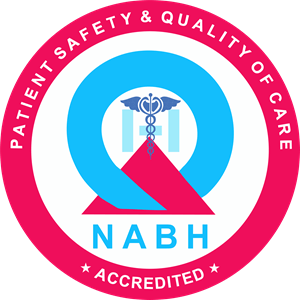Introduction:
Avascular Necrosis (AVN) of the hip is a condition that occurs when the blood supply to the hip joint is disrupted, leading to the death of bone tissue. This blog aims to raise awareness about AVN, offering insights into its causes, symptoms, diagnosis, and potential treatment options to empower individuals facing this challenging condition.
Understanding Avascular Necrosis:
Avascular Necrosis, also known as osteonecrosis, affects the hip joint when blood flow to the femoral head is compromised. This lack of blood supply can cause the bone to break down, leading to pain, limited mobility, and, if left untreated, potential joint collapse.
Common Causes:
- **Trauma:** Hip injuries or fractures can damage blood vessels, disrupting the blood supply to the femoral head.
- **Steroid Use:** Long-term use of corticosteroid medications can increase the risk of AVN.
- **Alcohol and Smoking:** Excessive alcohol consumption and smoking are associated with an increased risk of developing AVN.
- **Medical Conditions:** Conditions such as lupus, sickle cell anemia, and other blood disorders may contribute to AVN.
Recognizing Symptoms:
- **Hip Pain:** Persistent pain in the hip joint, often felt during weight-bearing activities.
- **Stiffness:** Reduced range of motion and stiffness in the hip.
- **Difficulty Walking:** Discomfort or difficulty walking, particularly during the later stages of AVN.
- **Joint Collapse:** In advanced cases, the hip joint may collapse, leading to severe disability.
Diagnosis and Evaluation:
If you are experiencing symptoms of AVN, it is crucial to consult with a healthcare professional. Diagnosis typically involves a combination of imaging tests such as X-rays, MRI, and CT scans, along with a thorough medical history and physical examination.
Treatment Options:
- **Conservative Approaches:** In the early stages, non-surgical methods such as medications, weight-bearing restrictions, and physical therapy may be recommended.
- **Core Decompression:** This surgical procedure involves removing a portion of the inner layer of the bone to relieve pressure and stimulate new blood vessel growth.
- **Joint Replacement:** In advanced cases where the hip joint is severely damaged, total hip replacement surgery may be recommended to restore function and alleviate pain.
Living with Avascular Necrosis:
- **Pain Management:** Work closely with your healthcare team to manage pain through medications and other strategies.
- **Lifestyle Modifications:** Adopting a healthy lifestyle, including weight management and cessation of smoking and excessive alcohol consumption, can positively impact your condition.
- **Regular Monitoring:** Regular follow-up appointments with your healthcare provider are essential to monitor the progression of AVN and adjust treatment plans accordingly.
Conclusion:
Avascular Necrosis of the hip presents unique challenges, but with timely diagnosis and appropriate management, individuals can effectively navigate this condition. By staying informed, actively participating in treatment decisions, and seeking support from healthcare professionals, patients can work towards maintaining their quality of life and managing the impact of AVN on their hip joint. Remember, early intervention is key to better outcomes, so don’t hesitate to seek medical advice if you suspect you may be experiencing symptoms of Avascular Necrosis.


